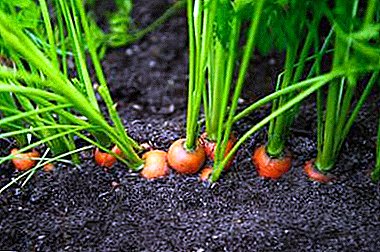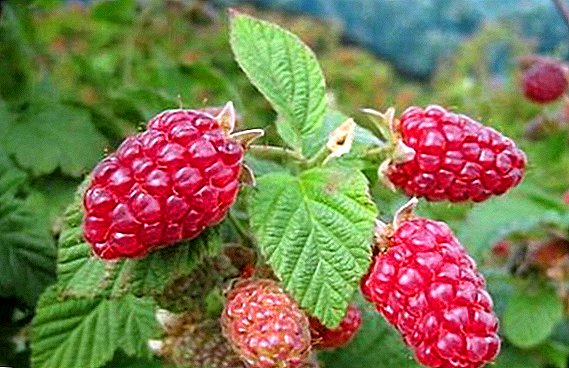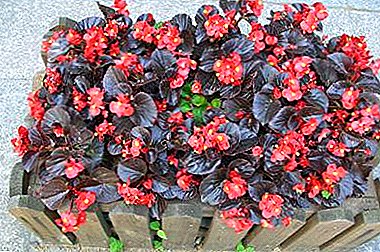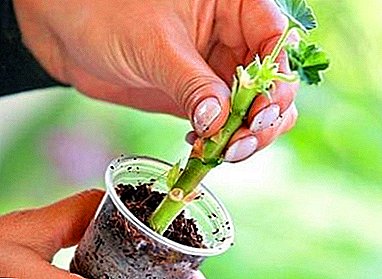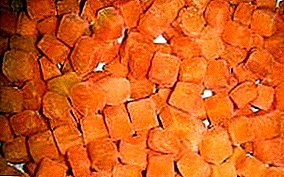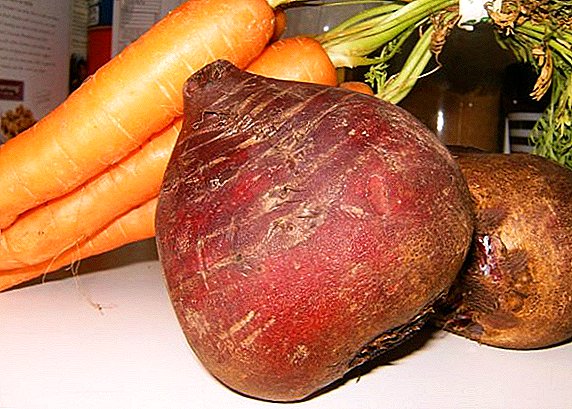 Perhaps the most pleasant time in the work of a gardener or a gardener is harvesting.
Perhaps the most pleasant time in the work of a gardener or a gardener is harvesting.
When all the troubles are over, it remains only to collect the fruits of your labor, so that you can enjoy them in the future.
However, many other questions arise here: "When exactly do beets and carrots are harvested?", "How to properly collect root crops?" or "How to store the harvest?". On each of them you will find the answer in this article.
Why not dig carrots and beets too early
When deciding when to pick carrots and beets from your garden, it is important to know that these root crops differ favorably from other crops by their cold resistance. This makes them able to survive the cold successfully, and if they also create a special substrate of peat and sand, it will be possible to leave the vegetables in the ground for the whole winter.
Nevertheless, the technology of creating such a soil is not easy and will require you to have certain knowledge and skills, as well as suitable environmental conditions, so only the most experienced farmers resort to this method of storing vegetables. 
Do not rush very early to dig carrots and beets. Even with the arrival of autumn, in September, they still grow beautifully, so if you get not fully ripe root crops from the ground, they will be poorly stored and will lose all their taste properties in the future. In addition, if the street is still warm enough and the earth did not have time to cool down, then abrupt movement of root crops from relatively warm soil to a cold basement will lead to significant losses during storage.
The optimal time for harvesting is considered to be a dry autumn day when the air temperature is between +4 ° C and -6 ° C (it is in these conditions that it is better to pick carrots and beets). If the temperature rises above +15 ° C, there is a rapid accumulation in vegetables of dry matter, carotene, enzymes and sugars.
What factors affect the harvest of carrots and beets
Not only external signs of ripening, but also some other factors affect the time of harvesting beets and carrots. The most common of these include a variety of vegetables growing in your garden (early, middle, or varieties intended for winter storage), biological features of growing plants, growing goals, condition of plants and, of course, weather conditions. 
Important! In no case can not dig up beets or other root crops in the rain, when it is wet and unpleasant on the street, because removing carrots from the garden in such conditions, it will be poorly stored and will quickly rot.Taking into account all these features, and accurately determining the time when you need to dig beets or carrots, you can get a quality crop with a pleasant taste and a fairly attractive appearance. In addition, the time collected fruits will be better stored.
When to clean beets and carrots from the garden, signs of full ripening of root crops
Since ancient times in Russia, it was believed that the best time to collect carrots, beets and some other root crops, ends on October 13. After this date, the beds should remain completely clean and prepared for the winter season.
This rule has a certain meaning, because when the air temperature drops to + 4 ° C, the roots stop growing, and at -3 ° C temperature, there is a high risk of their being affected by gray rot, so digging carrots in order to throw it out does not make sense . Modern gardeners, who harvest before the onset of stable autumn frosts, are also aware of this. 
Of course, this rule is more concerned with late ripening varieties, but when digging up beets and carrots of medium varieties of ripening, you can easily calculate yourself: for example, the full ripening period of carrots lasts from 80 to 110 days. Additional signs indicating the completion of the process of formation of root crops, are their yellowed lower leaves. Mid-season carrot should not be held in the ground, as this will only make it worse.
Gathering carrots with early ripening, as well as those root crops that were planted before winter, should be started in the middle of summer, using it to prepare fresh vitamin salads or simply eating fresh (it is very juicy and tasty) .
Did you know? To get a good harvest of carrot carrots, you can begin to harvest the roots when they reach a diameter of more than 1 cm. Having missed this period and left the crop for a long time in the ground, it will lose its bright taste and attractive appearance (often the fruits crack).It is better to dig up any fruits before the onset of prolonged rains (in each region this period may differ).

Rules for harvesting carrots and beets in the garden
If you know exactly when to pick up carrots and beets - this, of course, is good, but you still need to understand exactly how carrots or other root vegetables are harvested. The success of further storage of the crop depends on the correctness of the harvest.
Experienced gardeners recommend to remove the roots by hand, using a shovel or pitchfork only in extreme cases when there is not enough strength to remove the carrots for storage, simply by pulling it out of the ground. However, even in this case, it is necessary to try to undermine the soil very carefully, as garden tools can easily damage the crop, which will keep it worse and soon begin to rot.
The beet and carrot topper must be immediately removed so that it does not draw nutrients from the roots and they do not dry out. Leaves can only be left on a beam carrot, but in this case it is better to leave petioles no more than 2 cm. If in the latter case this part of the plant can be simply “unscrewed”, then when digging up beets, the tops must be trimmed with scissors or shears.
It is noteworthy that some gardeners, by contrast, are advised to leave the greens along with the root crops in order for the nutrients to pass from the upper to the lower part. However, it has long been proven that everything goes strictly in the opposite order. 
Important! Experienced gardeners are advised to cut the tops at a distance of about 3 mm from the head, then with the arrival of spring it will not begin to grow and will not dry the vegetables. If, however, cut it together with the top of the carrot head to 2 mm, it will help to extend the shelf life of the crop.From the excavated crop, it is necessary to carefully wipe the lumps of soil with a dry cloth, and after the roots have dried a little in the garden under the autumn sun, they can be removed for storage.
In no case should you wash carrots or beets, scrape them with a knife or knock down the ground, because you only damage the vegetables and they will spoil before you have time to cook the borscht from the new crop. Before placing the root crops in a permanent storage place, it will be good to dry them additionally in a cool room so that they cool down a little after the warm earth and sun.
Features storage of root crops
When digging up beets and carrots for storage, we have already figured out, but you also need to know about the features of the storage process. The best place for wintering the harvested crop is the basement or cellar, since it is in such premises that the most suitable temperature is set for long-term storage. It is undesirable to leave the roots on the balcony, especially if it is not glazed, because in such conditions, the harvest will freeze sooner or later, and all your work will be in vain. 
In the cellar, you can make special shelves that will protect the vegetables from the attention of mice, but if you do not have rodents, then beets and carrots can be simply poured into ordinary boxes or bins. Root crops are often dipped in clay or sprinkled with sand, which prolongs their storage at temperatures up to +3 ° C, although with proper and timely harvest, all such vegetables are already well stored, without any additional processing.
If the humidity in the room chosen for storage is relatively low, it is possible to leave the roots in ordinary plastic bags, and in order not to suffer from moisture (sometimes it happens), all vegetables are poured with sawdust.
Having learned how to correctly determine the time when you can dig up beets and carrots for the winter, and also understanding how to harvest and process the crop, you can easily store the fruits in their fresh, original form for a long time. In this case, until the next harvest you will always have on hand tasty and healthy vegetables from your own plot.





